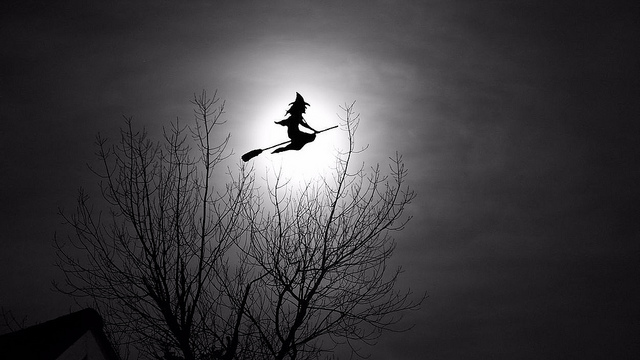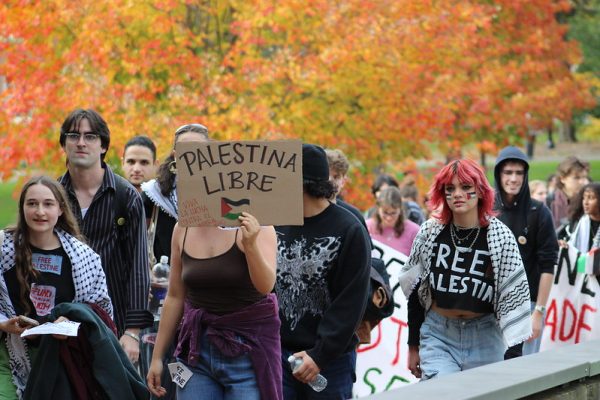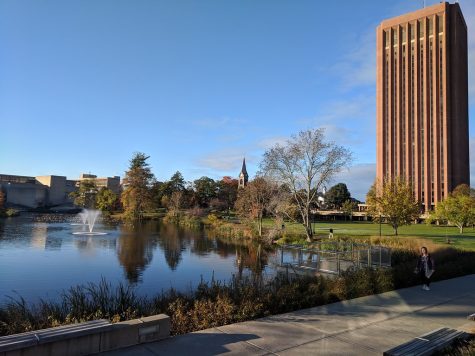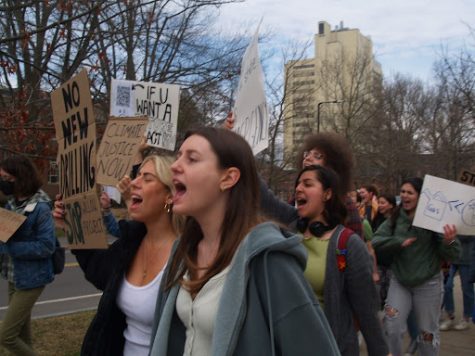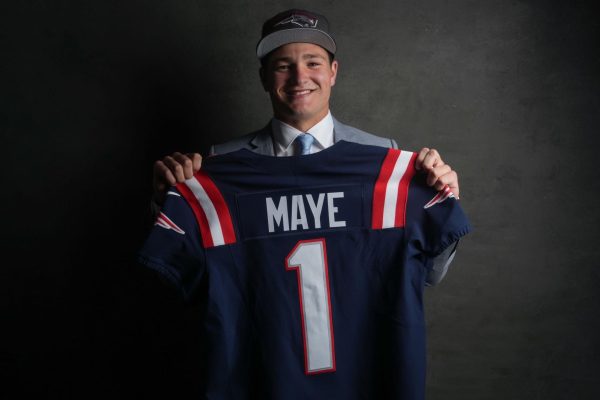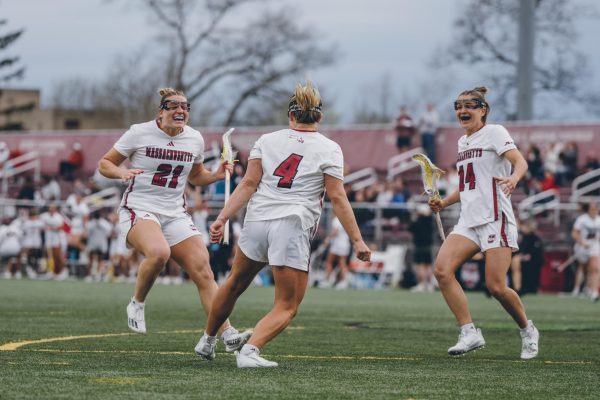Witches: A history of sexism and female empowerment
AMHERST — When you think of witches, who do you picture first?
Marie Laveau from “American Horror Story: Coven,” the twin witches from “Twitches” or the Wicked Witch of the West from “The Wonderful Wizard of Oz,” perhaps?
Or do you think of someone running around in a pointy hat and green face paint on Halloween?
Amherst College students and community attended “Witches in Halloween,” an event hosted by the Amherst College Women’s and Gender Center (WGC) that hosted a discussion about the impact of racial and gender-based stereotypes on the perception of witches in media.
The discussion was co-facilitated by WGC students and Karen Sanchez-Eppler, a professor of American studies and English.
Witches exist in many different forms, whether it be in pop culture like “Sabrina the Teenage Witch,” in history as with the Salem witch trials or the modern day religious practices of Wicca.
Around the room, four charts were placed with depictions of four famous witches in pop-culture. The charts held images of Sabrina the Teenage Witch , the twin witches from “Twitches,” the Wicked Witch of the West, and the Sanderson sisters from “Hocus Pocus.” Attendees were asked to write down what they thought of each witch and what they represent.
For the modern pop-culture witches like Sabrina and the Twitches, words like strong, fierce, smart and cute were written. Whereas for the older witches, their coordinating words consisted of evil, scary and mean.
“The whole point of this is to talk about how society’s views of witches have changed overtime,” said Taz Brown, a student programmer with WGC.
This brought about a discussion about the correlation of age, beauty and power.
“Part of making witches more attractive is making them more attractive,” Sanchez-Eppler said.
In order for witches to become more popular, she said, they had to become more physically attractive.
Brown asked the attendees to think about the idea of a good or bad witch and how it often projects the polarization of women. Women can either be all good or all bad — but nothing in between. Women of power, though, also appear as something to fear.
Silvia Sotolongo, a student at Amherst College, mentioned a movie titled, “The Sisterhood of the Night.” The movie is about a group of teenage girls accused of witchcraft due to the amount of time they spend together.
“It’s empowering to see women come together,” Sotolongo said, “But it scares people.”
The perception of witches as only evil figures has evolved a bit in the last twenty or so years, however. Ugly and mean witches are no longer the only representation the public sees.
We also see the witches from “American Horror Story: Coven,” who utilize the power of an all-women group, and Hermione Granger in “Harry Potter,” a smart and compassionate character. These characters represent a more human look at witches. They deal with the daily perils of life like school, relationships, and self-discovery outside of the realm of magic.
The idea of Hermione brought up another important question: What role do women of color play in the talk about witches?
In the 2016 play, “Harry Potter and the Cursed Child,” in London, England, Hermione Granger is played by Noma Dumezweni. Dumezweni, a black woman, faced attacks from many people on social media who alleged that Hermione could not be black.
J.K. Rowling, the author of the “Harry Potter” series, reminded upset readers that Hermione’s skin color was never mentioned in the books.
“Hermione can be a black woman with my absolute blessing and enthusiasm,” Rowling said in an interview with The Guardian.
On the topic of witches of color, discussion members made mention of all the witches of color they could think of. More often than not, these witches were viewed as practitioners of voodoo.
Madam Zeroni from “Holes”, Madam Odie in “Princess and the Frog” and Bonnie Bennett and family in the “Vampire Diaries” are examples of women of color portrayed as practicing magic through voodoo instead of witchcraft.
Even in the famous story of “The Crucible” it is thought that the young, white girls are infected with magic after performing a ritual with Tituba, the slave woman owned by their family.
A discussion member mentioned the contrast between scrutinizing women of color practicing magic and praising a white woman interested in holistic medicine and popular grocery store Whole Foods. This is an example of two women receiving different treatment for participating in similar practices, the person said.
Sanchez-Eppler then brought up the reclamation of the term “slut” such as with the empowering rape culture-awareness “Slut Walk” protests. Sanchez-Eppler also reminded the audience that “slut” is still used contextually to degrade women as well.
Like anything, the topic of witches and sexism is one open to debate and conversation. Finding the balance between embracing the sexiness of witches and exploiting the idea due to gender or race is something that media and society continue to struggle with.
This event was part of the Talk Back series. Jesse Beal, director of WGC, reminded attendees that the next talk will take place Nov. 10 in the WGC at Amherst College. They will discuss the women of the 2016 “Ghostbusters” film.
Email Olivia at [email protected] or follow her on Twitter @O_laramie.

